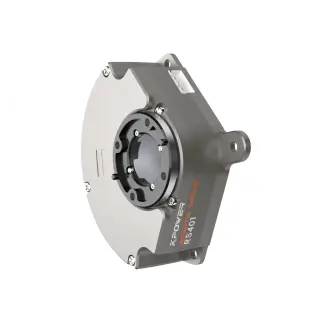The Magic of Motion: Why Servo Motors Captivate Makers
Servo motors are the unsung heroes of robotics. These compact devices turn code into physical motion, letting you animate everything from robot arms to whimsical Halloween props. Unlike regular motors, servos offer precision—they can swing to exact angles, hold positions, and even resist forces trying to push them off-course. And with Arduino, you don’t need an engineering degree to harness their power.

How Servos Work (Without the Boring Lecture)
Inside every servo, three components collaborate: a motor, a potentiometer (fancy word for a rotation sensor), and a control circuit. When you send a signal, the motor spins until the potentiometer says, “Hey, we’ve reached the target angle!” This feedback loop is why servos are so accurate. Most hobby servos, like the popular SG90, rotate 180 degrees—perfect for tasks like steering a robot car or waving a tiny flag.
Your First Servo Sketch: Making It Sweep
Let’s jump into code. Connect your servo to the Arduino:
Brown/Black wire → GND Red wire → 5V Yellow/Orange wire → Digital Pin 9
Open the Arduino IDE and paste this: ```cpp
include
Servo myServo;
void setup() { myServo.attach(9); }
void loop() { for (int angle = 0; angle <= 180; angle++) { myServo.write(angle); delay(15); } for (int angle = 180; angle >= 0; angle--) { myServo.write(angle); delay(15); } }
Upload the code. Watch your servo sweep like a metronome on caffeine. The `delay(15)` gives it time to reach each angle—reduce it for faster movement, but don’t go below 10 unless you want jittery robot vibes. #### Why Your Servo Might Be Throwing a Tantrum Servos are quirky. Here’s how to troubleshoot common issues: - Jittering: Power supply problems. Use a separate battery for the servo if your Arduino’s USB can’t keep up. - Limited range: Not all servos hit exactly 0-180 degrees. Calibrate using `myServo.writeMicroseconds(500)` (minimum) and `myServo.writeMicroseconds(2500)` (maximum). - Overheating: Don’t force it to hold a position against resistance for too long. #### Project Spark: Automated Plant Waterer (Phase 1) Let’s apply basics to a real project. Imagine a servo-controlled valve that waters plants on schedule. For now, prototype the motion:
cpp void loop() { myServo.write(90); // Neutral position (valve closed) delay(5000); myServo.write(180); // Open valve for 2 seconds delay(2000); }
This isn’t watering your ferns yet, but it’s the mechanical heartbeat of the idea. --- ### Leveling Up: Analog Control and Creative Hacks Once you’ve mastered sweeping motions, let’s make your servo responsive. Grab a potentiometer (a dial-like sensor) and wire it to analog pin A0. Then update your code:
cpp void loop() { int sensorValue = analogRead(A0); int angle = map(sensorValue, 0, 1023, 0, 180); myServo.write(angle); delay(20); }
Turn the potentiometer, and your servo follows like a loyal pup. This is the foundation for custom controllers—steering wheels, joysticks, or even light-sensitive triggers. #### Multitasking with Multiple Servos Need more moving parts? Connect a second servo to pin 10 and modify the code:
cpp Servo servo1, servo2;
void setup() { servo1.attach(9); servo2.attach(10); }
void loop() { servo1.write(random(0, 180)); servo2.write(random(0, 180)); delay(1000); }
Now you’ve got two servos dancing unpredictably—great for abstract art installations or confusing your cat. #### From Bored to Board Game: A Servo-Powered Dice Launcher Why roll dice by hand when a servo can do it? Build a platform that flicks a dice into the air: 1. Attach a small plastic arm to the servo horn. 2. Program a rapid movement from 0 to 180 degrees:
cpp void loop() { if (digitalRead(2) == HIGH) { // Trigger with a button servo1.write(180); delay(100); servo1.write(0); } } ``` Press the button, and the arm launches the dice. Add LEDs for dramatic effect.
Servo Ethics: Pushing Limits Without Breaking Them
Servos are tough but not indestructible. Avoid:
Continuous rotation: Unless you’ve modified the servo (yes, it’s a thing), don’t treat it like a wheel. Extreme forces: Gear teeth can strip. If your robot arm is lifting a soda can, you’re golden. A cinder block? Not so much.
The Grand Finale: A Servo-Driven Storyteller
Imagine a servo-powered puppet that acts out scenes from Alice in Wonderland. Use timed movements and props:
A servo tilts a teacup. Another flaps a cardboard Cheshire ’s tail. Code becomes theater here. Each write() command is a stage direction.
Wrapping Up: Your Servo, Your Rules
Servos turn code into kinetic poetry. Whether you’re automating chores, building art, or pranking friends, the only limit is your willingness to experiment. Burned out a servo? Congrats—you’ve joined the ranks of every engineer who’s ever muttered, “Well, that didn’t work.” Now grab another and keep iterating. The next great motion-driven idea is just a sketch away.











































